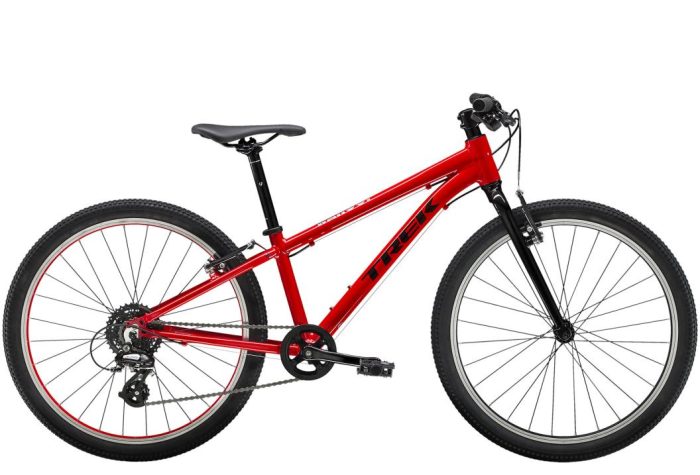How Does V Brakes Work
WHAT ARE V BRAKES?
A cable that extends from one side of the brake and across the top, drawing the two halves of the brake together, is used to operate V-brakes (sometimes referred to as direct-pull cantilever brakes). Other brake designs exist, but they’re uncommon on popular bikes.
The top of cantilever brakes, where the wires converge, is shaped like a V. But when you look at V brakes, it’s difficult to see how they got their name because they don’t even resemble a V. The following explains why V brakes are given that name. When used, V brakes create an upside-down V.
V brakes improved the rim braking performance for off-road bicycles. Most individuals are curious about how V brakes function. The two long arms give leverage while pulling on the brake cord. As a result, a lot of electricity is distributed. Except for slippery and muddy conditions, practically every situation favors the performance of V brakes.
V BRAKES MECHANISM:
The key drivers behind how V brakes function are its technicalities and the complexity of their attachment, which must be understood before we can fully comprehend how simply a V brake operates.
BASIC PARTS OF V BRAKES
A V brake system’s fundamental parts are a brake lever, a cable and housing, a metal cable guide, a stirrup, left and right caliper arms with spacers and brake pads, left and right bosses that are fastened to the fork or frame, and the bicycle’s rim.
CALIPER ARM CONNECTION:
The caliper arms are fastened to both frame bosses with the aid of a spring tab. In turn, the boss’s hole is connected to the spring tab. This spring tab delivers spring loading for each caliper arm and is customizable. A different bolt is used to fasten the caliper to the boss. It can still be freely moved, though.
HOUSING AND CABLE CONNECTION:
The handlebar is connected to the brake lever. After being installed, the cable and housing move along the length from the lever to the top of the metal cable guide. The stirrup is fastened to the metal cable guide, which the cable travels through. After that, the cable extends to the opposing caliper arm.
FINALLY V BRAKE CONNECTION:
The cable is drawn through a fixing bolt on the caliper arm. This is carried out up until the necessary tension and brake pad gap are obtained. The fixing bolt is then tightened after that.
WORKING OF V BRAKES
After learning about the complexities of a V brake, let’s examine the straightforward method by which it operates. The cable is dragged through the housing when the rider pulls the lever that is fastened to the handlebar. The brake pads are pressed up against the rim as a result of the restrictions on the combinations of the cable housing, stirrup, and metal cable guide. As a result of the friction created between them, the bicycle either slows down or stops.
ADVANTAGES OF V BRAKES
There is short-arm, mini-V brakes that work with road levers, but they make clearance problems even worse.
Even while travelling, they are simple to maintain and replace. V-Brakes do not put additional load on the hubs or spokes. They don’t prevent a rear kick stand from being mounted. It’s simple to find replacement brake shoes and other braking parts on the market.
V Brakes – FAQs:
Are V brakes superior to disc brakes?
Your cell phone will be useful if you need a ride and don’t have a patch kit. Your ID will enable emergency personnel identify you and assist you if something horrible happens. Any cyclist understands the discomfort of setting out on a trip far from home only to encounter a flat tyre.
This is the reason I always take my patch kit with me wherever I travel; it keeps you from being stuck in dangerous or remote situations.
Patch kits are helpful, especially if you enjoy riding on more difficult terrain.
Since they take up less space, I advise choosing patches that simply attach over the defect without the need for glue.
Are V brakes effective?
V brakes are generally good. They are the greatest rim brakes available. The explanations are that they are the simplest to squeeze and to modify. Disk brakes are the only type of brake that provides higher performance.
Why are V brakes used on road bikes?
Because the direct pull cantilever action allowed for more braking force than a conventional cantilever, V-brakes were developed. They have much stronger brakes. Side-pull brakes’ center brake bolt and the requirement to mount a draw point for the canty brake wire were eliminated by the introduction of V brakes.
V brakes vs cantilevers: which is superior?
Compared to V-brakes, cantilever brakes provide improved tyre clearance and reduce mud buildup. Cantilever brakes work with brake-shifters, unlike V brakes. This is one of the key justifications for cantilever brakes on cyclotrons and touring bicycles.
How does a V brake work?
V-Brakes. The most popular name for this kind of brake is a “V brake.” These are actually called “linear-pull” or “direct-pull” brakes by other brake manufacturers in addition to Shimano. These brakes have a ton of power. They are most frequently found on off-road and mountain bikes.
Why do my V brakes keep jamming?
If the problem is with the V brakes, it can be a broken spring or a lubrication issue. If the brakes may move freely and rebound forcefully, there is probably a problem with the cable or brake lever. Slide the cable back and forth; it should be able to move without being pulled out of the housings.
V brakes are they universal?
Except for a very small number of types known as micro V brakes, which utilize short pull brake levers as opposed to long pull, they are ubiquitous. These differ from others in having extremely short arms.
Do V brakes require unique levers?
V-Brakes: These brakes similarly fasten to brake bosses, but they call for a brake lever with a “long pull” (see brake levers section below). In addition, a unique component known as a “noodle” is required for the cable to function properly.
When ought V brakes to be changed?
“When the teeth, or grooves, in the rubber on rim brake pads (v-brake, cantilever, road), they need to be replaced. In new brake pads, there are typically teeth, grooves, or some other pattern.
Do all V brakes work together?
Yes, they all cooperate. Only small V-brakes are an exception.
Can U brakes be used in place of V brakes?
The bad news is that V brakes cannot be retrofitted to U brake studs. 1. As already said, they are positioned incorrectly in regard to the rim. 2. The posts’ diameter is excessive.
Contact Us
If you have any suggestions or advise, please feel free to reach us via our Contact Us here.
Our articles are developed after considerable research and studies online and also including seeking informational experience based tips from professional rides. Key sources of information are interviews, google search and youtube.



